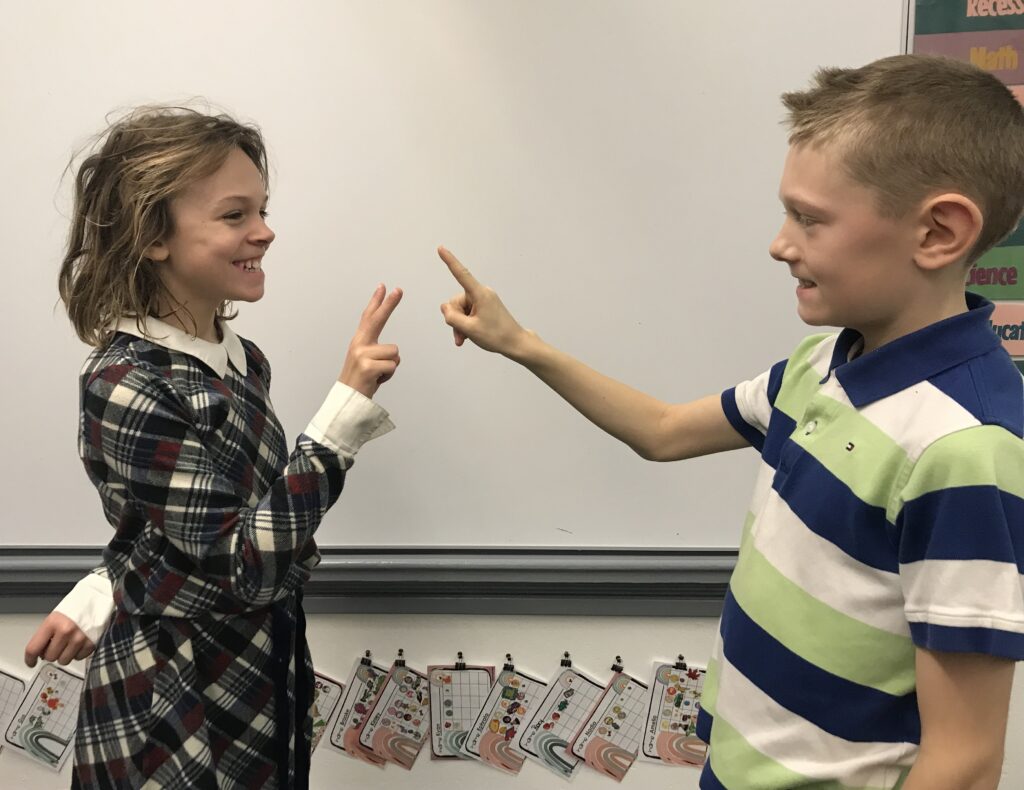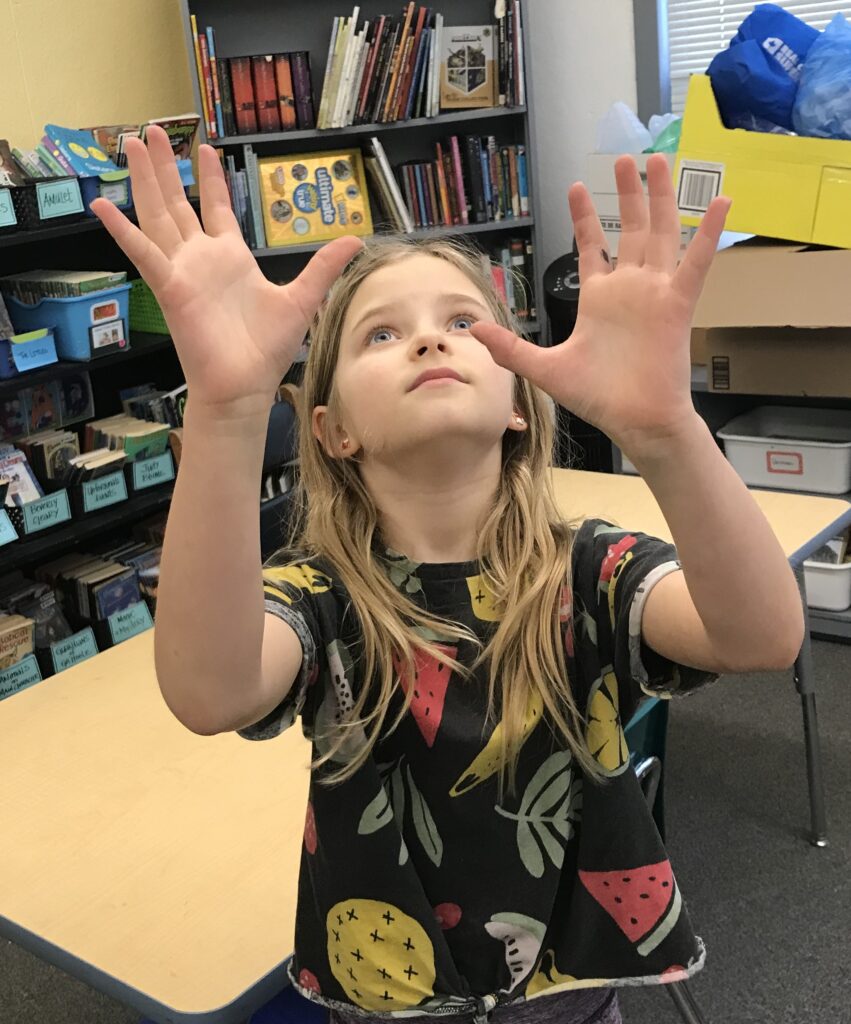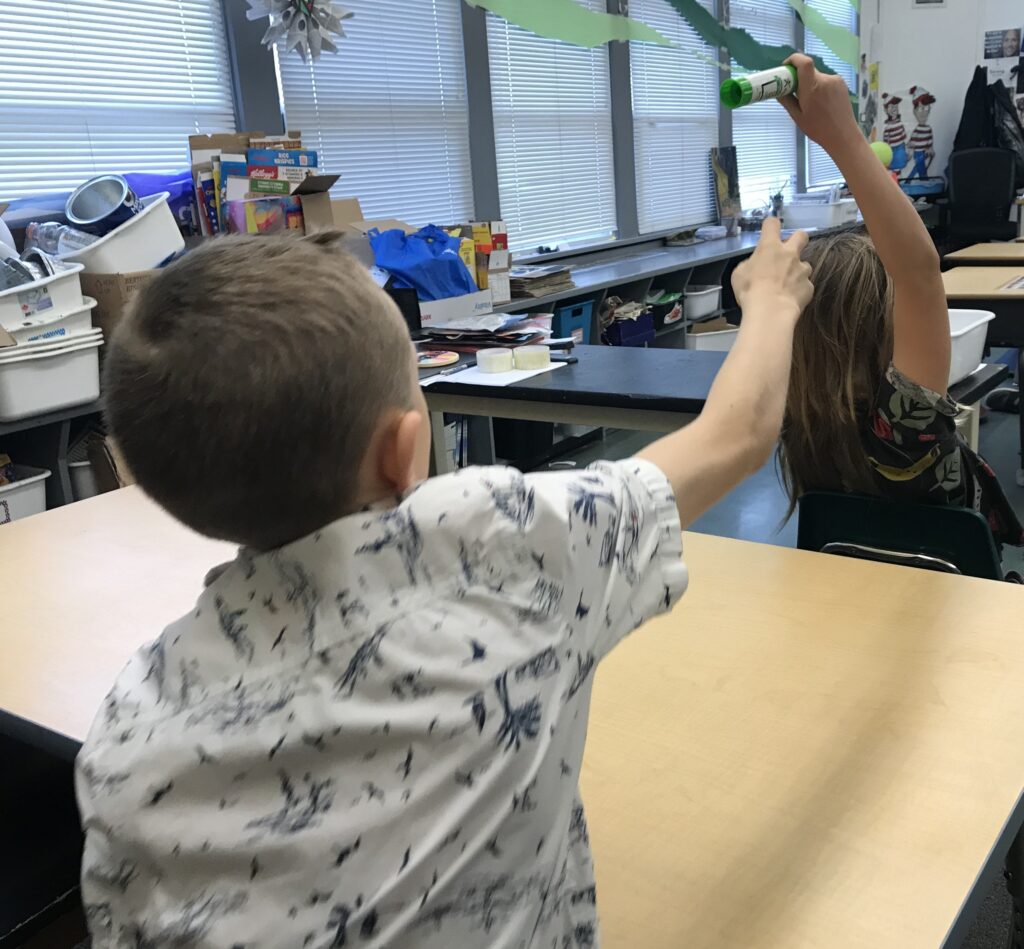In elementary schools, teachers have the wonderful opportunity to help students along their physical literacy journeys, such as developing fundamental movement skill competency and valuing physical activity for health, enjoyment, and social interaction. In addition to delivering a quality physical education program—which includes effective teaching; developmentally appropriate learning activities; maximum student participation; and constructive, fair assessment—it is important to promote physical activity throughout each school day.
 “Energizers” (i.e., 5 – 10 minute physical activities) allow for increased levels of physical activity all through the day and provide natural transition times for teachers and students to reset and focus on their learning. Teachers can employ energizers to help enhance student learning and to create positive (healthy and active) learning environments while providing opportunities for students to release excess energy and to interact with classmates.
“Energizers” (i.e., 5 – 10 minute physical activities) allow for increased levels of physical activity all through the day and provide natural transition times for teachers and students to reset and focus on their learning. Teachers can employ energizers to help enhance student learning and to create positive (healthy and active) learning environments while providing opportunities for students to release excess energy and to interact with classmates.
The purpose of this article is to describe five energizers that can help elevate students’ physical activity levels while simultaneously promoting innumerable benefits related to academic achievement, health, cooperation, and communication. Notably, each energizer requires minimal space, minimal equipment, minimal set-up and organizational planning time, and can be easily modified for the range of developmental levels present across K to 6 classrooms.
ENERGIZER 1: Toss It!
 After selecting a student leader, the teacher chooses an object that each student has access to (e.g., an eraser) for students to toss around. The student leader calls out and performs one action. For example, the leader might call out, “Toss your eraser up, clap your hands once, and catch the eraser.” The rest of the class performs the action in their own space (e.g., near their own desk). As the energizer progresses, actions may increase or decrease in difficulty depending on classroom space and developmental appropriateness. Consider providing time for students to perform a movement pattern several times before moving on to a different one. Examples of actions that can be called out by student leaders include:
After selecting a student leader, the teacher chooses an object that each student has access to (e.g., an eraser) for students to toss around. The student leader calls out and performs one action. For example, the leader might call out, “Toss your eraser up, clap your hands once, and catch the eraser.” The rest of the class performs the action in their own space (e.g., near their own desk). As the energizer progresses, actions may increase or decrease in difficulty depending on classroom space and developmental appropriateness. Consider providing time for students to perform a movement pattern several times before moving on to a different one. Examples of actions that can be called out by student leaders include:
• toss your eraser to a partner and catch their eraser
• toss the eraser up (left hand), “do the twist,” and catch the eraser (right hand)
• toss up the eraser, catch it, and then perform three one-foot hops
Modification Ideas: Other objects could be chosen (small stress balls, bean bags, rhino skin balls, etc.) depending on students’ developmental levels.
ENERGIZER 2: Classroom Aerobics
The teacher chooses a physical activity or sport as a theme (e.g., baseball). While standing next to their desks, the students imagine that they are participating in a game or activity and mimic the teacher’s or a selected student leader’s movements. For example, if baseball is the theme, movements
can include:
• sprinting from first base to second base (standing in one spot, students sprint “on the spot”)
• reaching high overhead to catch a ball
• swinging a bat with aspirations of hitting a home run
• throwing a ball to home plate from center field
Examples of possible physical activity or sports as themes include animal movements, volleyball, building a house, tennis, soccer, etc.
Modification Ideas: Considering students’ developmental levels, music can be added to help make this energizer even more stimulating and to enhance maximum participation.
ENERGIZER 3: Body Spelling
While students stand next to their desks, the teacher asks them to spell out a word (e.g., a word from a word wall). In doing so, students strive to make shapes of letters with their bodies (engaging their balance and stability skills).
Group Challenge: In small groups (e.g., groups of 4), students are asked to create their own 4-letter word, and have the rest of the class guess their word.
Modification Ideas: To help students use their creativity to twist and bend their bodies while learning/reviewing the shapes of letters, the teacher could allow the use of small objects (e.g., ruler) to help complete the letters.
ENERGIZER 4: Desk Relay
 After arranging the student desks (or chairs) into rows of five or six, the teacher asks the students to sit facing the same direction (e.g., towards the teacher’s desk). The teacher passes a small classroom item (e.g., pencil, eraser, whiteboard marker) to the first student in each row who passes the item above their heads to the person behind them; the next student passes the item under their desk to the person behind them; and the same pattern continues until the object arrives in the hands of the student at the end of the row. This student stands and carries the item to the front of the row. As that student sits in the front desk/chair, all other students move one desk/chair backwards and the passing pattern begins again.
After arranging the student desks (or chairs) into rows of five or six, the teacher asks the students to sit facing the same direction (e.g., towards the teacher’s desk). The teacher passes a small classroom item (e.g., pencil, eraser, whiteboard marker) to the first student in each row who passes the item above their heads to the person behind them; the next student passes the item under their desk to the person behind them; and the same pattern continues until the object arrives in the hands of the student at the end of the row. This student stands and carries the item to the front of the row. As that student sits in the front desk/chair, all other students move one desk/chair backwards and the passing pattern begins again.
Modification Ideas: Considering students’ developmental levels, the following modifications could help enhance maximum participation and the overall level of challenge:
• students could be asked to set a time limit and count how many times they switch desks/chairs in the allotted time frame
• students could be asked to set a goal for how many desks/chairs they intend to move as a group in the allotted time and to strive to achieve (or beat) their goal
• students could be asked to pass the item “to the left and then to the right” to the student behind, instead of the “over the head and under the chair” passing pattern
• students can choose different locomotor movements to get from the back to the front of the row (e.g., walking backwards, 2-foot hopping, leaping, side-stepping)
ENERGIZER 5: 1, 2, Math
The teacher plays music using any available device. As the music starts, the students move around the classroom using a locomotor skill called out by the teacher (e.g., 2-foot hopping, leaping, walking backwards). When the music stops, students find a classmate to play against. When students are paired up, the teacher calls out a physical activity (e.g., squats, lunges, toe touches) and a math equation type (e.g., addition, subtraction, multiplication, division).
Upon hearing the teacher’s “physical activity and math equation type” (e.g., toe touches and subtraction), students make a fist with one hand while facing their partner, and say “1, 2, Math”! On the word “Math,” students show between one and five fingers. Then, the students apply the math equation to the number of fingers they are both showing and complete the number of activities designated based on the answer to the equation (e.g., 5 – 2 = 3 toe touches; 5 x 2 = 10 toe touches).
Modification Ideas: When considering students’ developmental levels, the following modifications could help enhance maximum participation and the overall level of challenge:
• students could use two fists (allowing for larger numbers to enter into the math problems)
• students could be asked to focus on specific math equation types (e.g., only multiplication)
• students could be asked to complete three math problems before moving on to another partner; the music will begin when all students have completed three math problems
Concluding Thoughts
In addition to quality physical education programming, elementary school children benefit from physical activity breaks after sitting at their desks for long periods of time. Energizers promote innumerable benefits for student development (e.g., fundamental movement skills, social skills, academic skills) all within the classroom space.
In support of the five energizer examples, we conclude with the following points for teachers considering energizers in their K to 6 classrooms:
• energizers require minimal space and minimal equipment
• energizers can be modified depending on learning needs, developmental levels, classroom space, accessibility, and resource availability
• energizers can promote fundamental movement skill development
– locomotor skills (e.g., animal walking, hopping, side-stepping)
– manipulative skills (e.g., catching, dribbling, tossing)
– balance and stability skills (e.g., bending, reaching, twisting)
• energizers can help enhance students’ cooperative and communicative skills as they work together to complete an assigned task
• energizers can promote creativity and help foster leadership skills
Teachers, we hope you enjoy energizing your classroom!
ABOUT THE AUTHORS
Brent Bradford
Brent Bradford (PhD) is an Associate Professor (Faculty of Education) at Concordia University of Edmonton (CUE). Brent has extensive teaching experience at the school (2000-2009) and post-secondary (2009-present) levels. He has published widely in the field of Physical Education and has co-authored two teacher education textbooks related to Physical Education (2018) and Health Education [2017). In 2021, Brent published an edited volume entitled, The Doctoral Journey: International Educationalist Perspectives, and is the inaugural Book Series Editor for The Doctoral Journey in Education series (BRILL). Brent was awarded CUE’s Gerald S. Krispin “President’s” Research Award (2019), and has served on numerous committees, such as: President (Education Society of Edmonton), Editor (The Alberta Teachers’ Association Runner Journal), and Board of Directors (Physical & Health Education Canada).
Erin Wright
Erin Wright (MPH) is a wellness enthusiast with a Bachelor of Science degree in Kinesiology and a Master’s degree in Public Health (Health Policy and Management). In 2007, Erin began working in comprehensive school health with elementary schools across northern Alberta, Canada to empower healthy children in healthy schools. Erin’s passion for listening to student voice, school community engagement, and promoting wellness led to her current role at the post-secondary level. Since 2017, Erin has been involved in research projects related to implementing comprehensive school health at post-secondary institutions and developing course curriculum related to health promotion and comprehensive school health. Erin now works with the School of Public Health at the University of Alberta as a full-time lecturer. Erin continues to be inspired by the voices and work of students (e.g., pre-service school teachers) to promote and advocate for health at all levels of education.
Sara van Leusden
Sara van Leusden (MEd) is a big advocate for inspiring elementary pre-service teachers to fall in love with the idea that teaching Quality Daily Physical Education (QDPE) does not have to be scary! Her goal is to empower teachers to use the skills they have to create a caring and safe social/emotional physical education environment where everyBODY has the chance to experience joyous movement no matter where they are in their physical literacy journeys. Currently, Sara is teaching “Elementary Curriculum Physical Education Pedagogy” at the University of Alberta and “Cooperative Games in Physical Education” at Concordia University of Edmonton. When Sara isn’t teaching, she can be found chasing her kids, convincing her dog to drop the ball, and enjoying ways to be physically active!
This article is featured in Canadian Teacher Magazine’s Spring 2024 issue.











